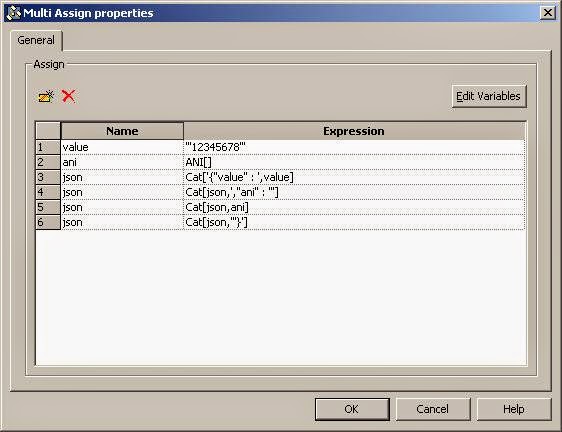Summary
In this article I'll be discussing a way to implement call data passing between disparate telephony systems, i.e., Computer Telephony Integration (CTI). The techniques I employ in this article (DNIS pooling, database storage of call data, etc) are nothing groundbreaking. In fact, these techniques are as old as the hills (well, maybe not that old). What will be new here is the use of current software architectures such as REST with highly-efficient run-time environments such as Node.js and Redis to realize an open data integration between 3rd party systems.
This article is the culmination of a series I've written on this topic. In Part 1, REST calls from Genesys Routing Strategies, I discussed how to make REST web service calls from one particular vendor's CTI system (Genesys). In Part 2, VXML and REST Web Services, I discussed REST web service execution from VXML applications.
I'll be leveraging information in this article that I've presented in the following previous articles:
Node/Basic Auth - HTTP Basic Auth on Node.js
Node/CA Certs - CA-signed SSL Certificates with Node
Implementation
Figure 1 below depicts the overall architecture. The 'RAM Cache' component is the focus of this article. The overall use-case of that cache is to provide 3rd Party telephony systems, with proprietary-only integrations, an open standard method for passing call data between them. Example: call that is transferred between two disparate systems. It would be preferable to retain any data that was gathered by the transferer and pass it to the transferee.
 |
| Figure 1 |
Figure 2 depicts the details of the transfer scenario mentioned above. A caller calls Telephony System X, during the call System X gathers various pieces of information relevant to the caller, then System X transfers the call to System Y. The RAM Cache provides the mechanism for call and data matching on that transfer. The RAM Cache provides a target DNIS, from a pool of numbers assigned to System Y, for System X to transfer the call. Additionally, the RAM Cache stores any caller data under a DB key that is the combination of the target DNIS and caller's ANI. The combination of the two provides some additional protection from call/data collisions vs. systems based on either DNIS or ANI alone. System Y can subsequently match the call and data upon receipt of the transfer.
 |
| Figure 2 |
The RAM Cache architecture itself is depicted in Figure 3. The Node runtime with various modules are utilized to implement: a. HTTP server that provides the REST interface and b. a client to the Redis database. A static configuration file is utilized for all server information. Redis provides a key/value store for the DNIS:ANI-keyed values. Additionally, by configuring key expirations in Redis we can implement automatic expulsion of stale key/values.
 |
| Figure 3 |
Figure 4 depicts the REST interface I implemented here. POST's insert data into the store (Create). GET's fetch data from the store (Retrieve). DELETE's both fetch the data and cause it to be deleted from the store (Delete).
Example Use
Below are some cURL examples on use of the REST interface.
POST
curl --user "username:password" -v -i -H "Content-Type:application/json" -X POST -d '{"value" : "12345678", "ani" : "1234567890"}' https://yourDomain.com/cticache/DNIS-ANI
HTTP/1.1 201 Created< X-Powered-By: ExpressX-Powered-By: Express< Location: /cticache/DNIS-ANI/5551234568:1234567890Location: /cticache/DNIS-ANI/5551234568:1234567890< Content-Type: application/json; charset=utf-8Content-Type: application/json; charset=utf-8< Content-Length: 59Content-Length: 59< Date: Mon, 29 Sep 2014 00:19:53 GMTDate: Mon, 29 Sep 2014 00:19:53 GMT< Connection: keep-aliveConnection: keep-alive
< * Connection #0 to host yourDomain.com left intact{"dnis":"5551234568","ani":"1234567890","value":"12345678"}
GET
curl --user "username:password" -v -i https://yourDomain.com/cticache/DNIS-ANI/5551234568:1234567890
HTTP/1.1 200 OK< X-Powered-By: ExpressX-Powered-By: Express< Content-Type: application/json; charset=utf-8Content-Type: application/json; charset=utf-8< Content-Length: 20Content-Length: 20< ETag: W/"14-2814665325"ETag: W/"14-2814665325"< Date: Mon, 29 Sep 2014 00:24:14 GMTDate: Mon, 29 Sep 2014 00:24:14 GMT< Connection: keep-aliveConnection: keep-alive
< * Connection #0 to host yourDomain.com left intact{"value":"12345678"}
DELETE
curl --user "username:password" -v -i -X DELETE https://yourDomain.com/cticache/DNIS-ANI/5551234568:1234567890
HTTP/1.1 200 OK< X-Powered-By: ExpressX-Powered-By: Express< Content-Type: application/json; charset=utf-8Content-Type: application/json; charset=utf-8< Content-Length: 20Content-Length: 20< Date: Mon, 29 Sep 2014 00:26:35 GMTDate: Mon, 29 Sep 2014 00:26:35 GMT< Connection: keep-aliveConnection: keep-alive
< * Connection #0 to host yourDomain.com left intact{"value":"12345678"}
Copyright ©1993-2024 Joey E Whelan, All rights reserved.










